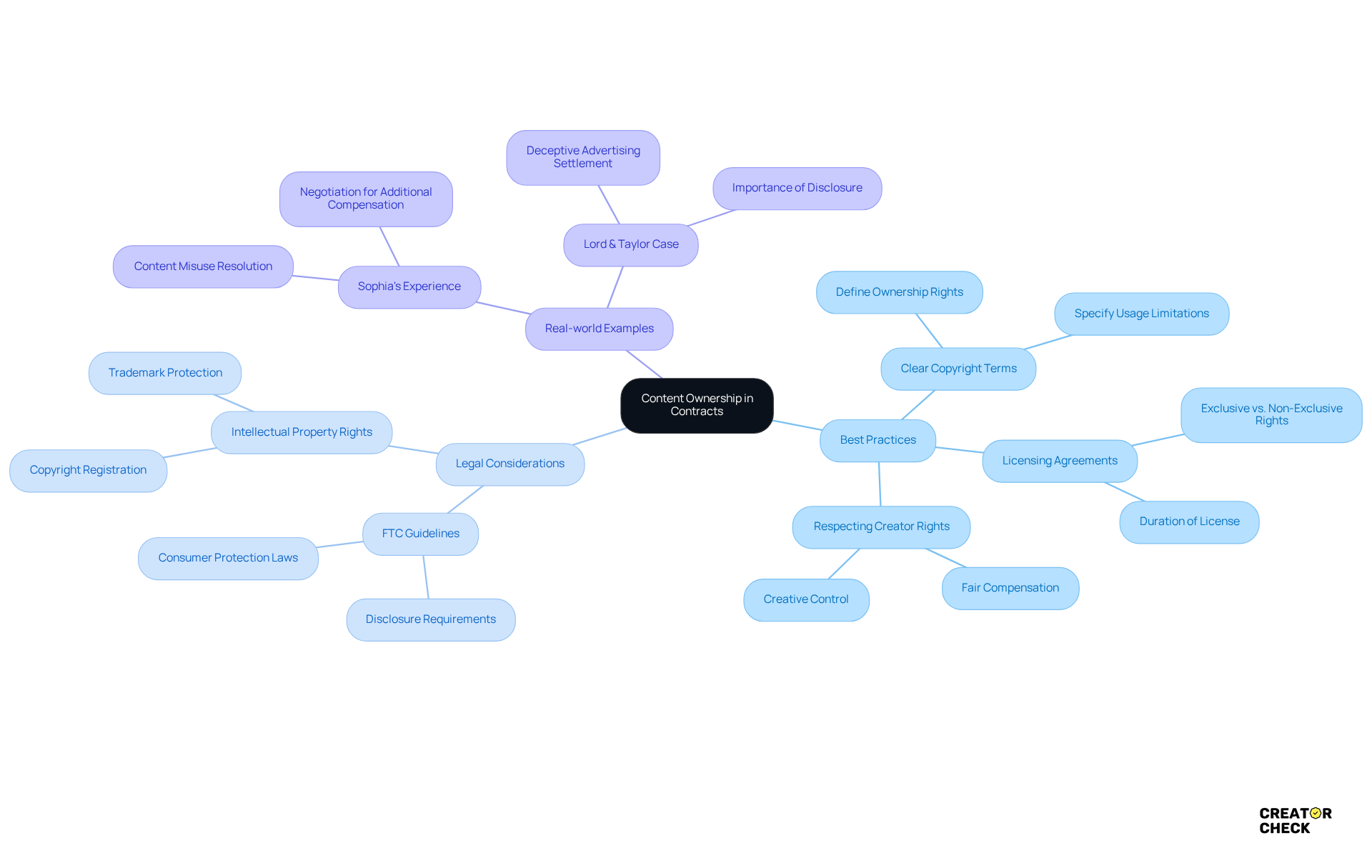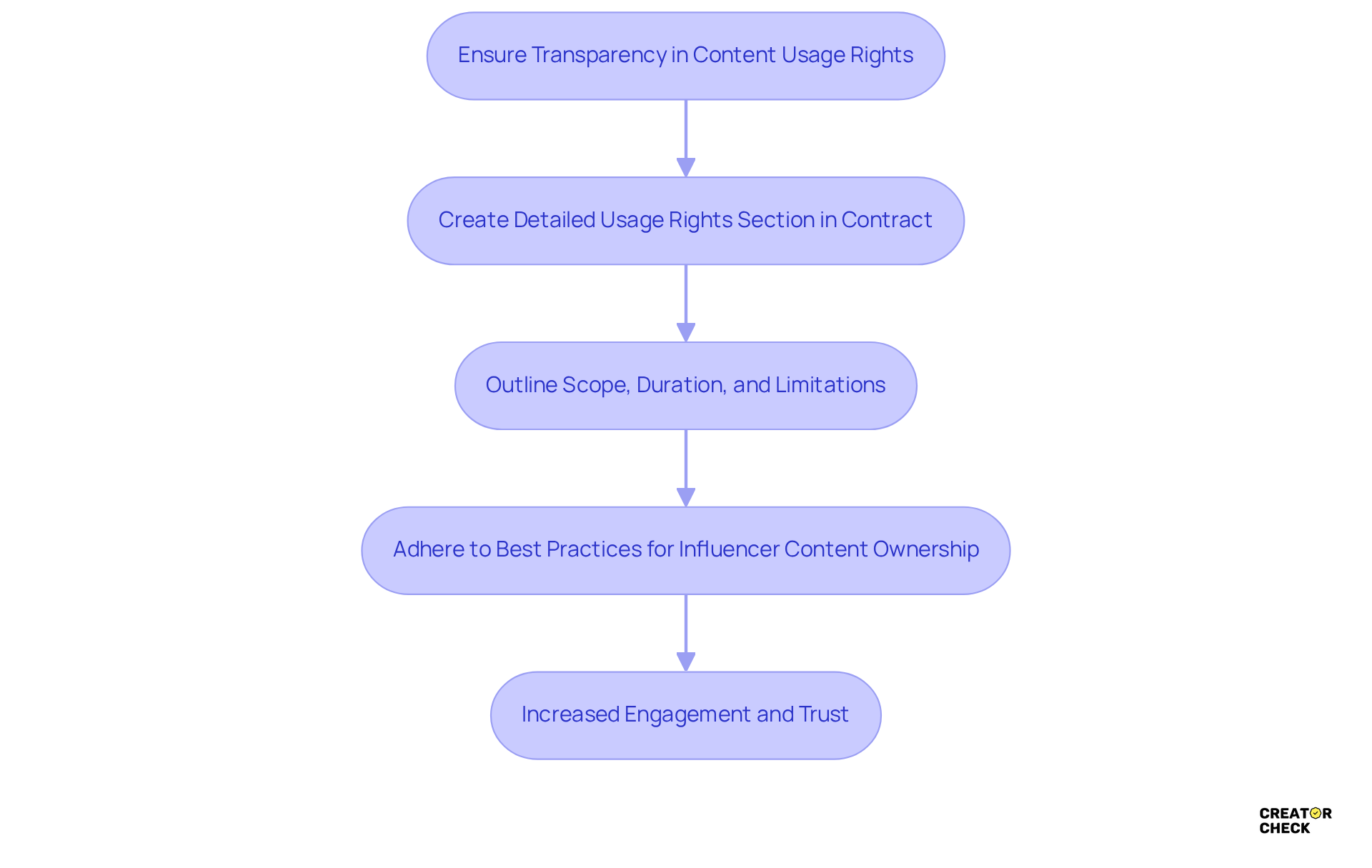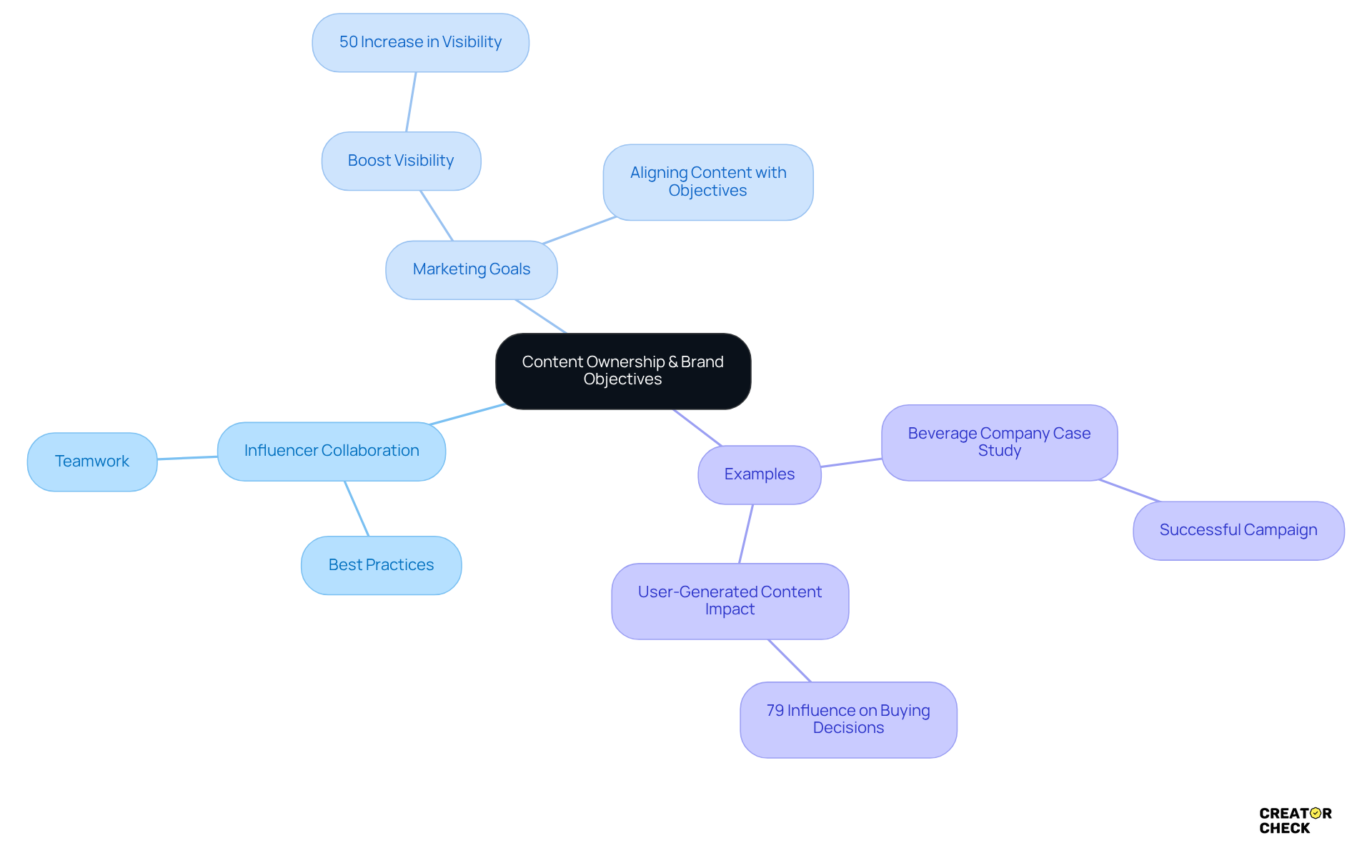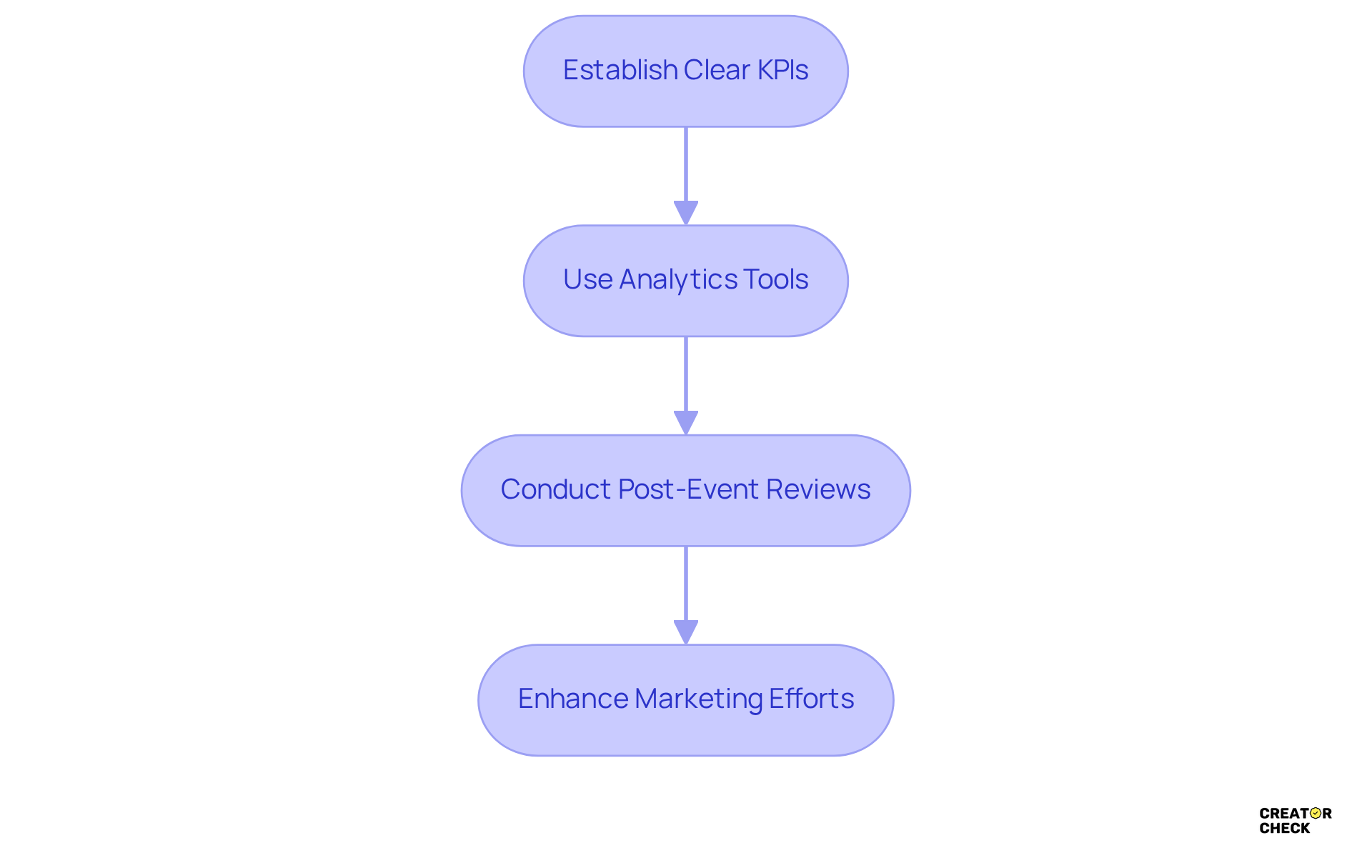Overview
This article dives into the best practices for influencer content ownership and management. It highlights how crucial it is to have clear ownership terms, be transparent about content usage rights, align with brand objectives, and continuously evaluate performance.
By setting up explicit contracts that clearly outline ownership and usage rights, brands can build stronger relationships with influencers, boost their marketing effectiveness, and steer clear of legal disputes.
Real-world examples show just how beneficial these practices can be. So, what does this mean for you? Let’s explore how you can implement these strategies to enhance your influencer partnerships!
Introduction
Navigating the complex world of influencer marketing can be quite the journey, right? It really calls for a solid grasp of content ownership and management. As brands lean more on influencers to boost their messaging, setting clear ownership terms becomes super important. This not only protects both parties' interests but also helps build fruitful collaborations.
But here’s a thought: how can companies make sure their agreements not only safeguard their investments but also honor the creative rights of influencers?
Let’s dive into some best practices for influencer content ownership. We’ll explore:
- How to keep contracts clear
- Ensure transparency in usage rights
- Align content with brand goals
All while tackling the challenges that pop up in this ever-evolving digital landscape.
Define Clear Ownership Terms in Contracts
When crafting agreements with influencers, it’s super important to adhere to the best practices for influencer content ownership to clearly establish who owns the content that gets created. This means being clear about copyright ownership and any licensing deals. For instance, if a company wants to use the creator's content for promotional purposes, the agreement should clearly state whether the company has exclusive rights or if the creator can use the content elsewhere too. A solid ownership clause not only protects your investment but also respects the creator's rights, paving the way for a more collaborative vibe.
So, here’s a real-world example: a well-known skincare brand recently found itself in a legal pickle with a social media influencer over content ownership. The confusion stemmed from a contract that didn’t clearly outline who could use the promotional videos they had created together. To steer clear of such headaches, brands should make sure their contracts explicitly lay out ownership rights and usage permissions by adhering to the best practices for influencer content ownership, ideally with a legal pro who knows the ins and outs of influencer marketing.
This way, everyone knows where they stand, and it keeps things running smoothly!

Ensure Transparency in Content Usage Rights
Brands really need to be clear about the best practices for influencer content ownership and how they plan to use the material generated by influencers. This means letting them know if their content will be used for social media, ads, or other marketing channels. By being upfront about usage rights, companies can dodge misunderstandings and ensure that influencers feel respected and valued, which reflects the best practices for influencer content ownership.
So, how can you do this? One great tip is to create a detailed usage rights section in the contract, which reflects the best practices for influencer content ownership. This should outline the scope of use, duration, and any limitations in accordance with best practices for influencer content ownership. For example, if a company plans to use an influencer's material in a paid advertising campaign, it should adhere to the best practices for influencer content ownership, clearly stating how long the campaign will run and any regional restrictions.
Let’s dive into a real-world example: A fashion label that clearly outlined its intentions for influencer material saw a 30% increase in engagement rates. Why? Because influencers felt more secure in their partnerships and were more willing to promote the label authentically. So, being clear really pays off!

Align Content Ownership with Brand Objectives
When it comes to owning materials, companies really need to consider the best practices for influencer content ownership and how these materials align with their marketing goals. For instance, if a company's aim is to boost visibility for a new product line, keeping control of the material is super important. This way, the company can use the material across different platforms and campaigns, really maximizing its reach and impact.
A collaborative approach is key here; brands should definitely bring influencers into the conversation about their goals and how the material can best support those aims. This teamwork helps build stronger connections and ensures that the material created adheres to the best practices for influencer content ownership, making it both relevant and impactful. As Charlie Tansill, President of PR, Social and Influence at Ogilvy North America, puts it, "The current influencer marketing landscape demands a nuanced approach that prioritizes transparency, authenticity, and targeted engagement."
Take, for example, a beverage company that teamed up with influencers to launch a new drink line. They found that by keeping ownership of the material, they could reuse it for various campaigns. This strategy led to an impressive 50% increase in visibility, highlighting the significant benefits of aligning ownership with marketing goals. Plus, it's been shown that user-generated content influences 79% of buying decisions, which really underscores the importance of adhering to best practices for influencer content ownership in ownership discussions.
So, what does this mean for you? By fostering these partnerships and keeping ownership in mind, you can enhance your marketing efforts and see real results!

Monitor and Evaluate Content Performance
To really boost your marketing initiatives, it’s essential for brands to consistently track and assess how their content is performing. This means keeping an eye on engagement metrics, conversion rates, and overall return on investment (ROI).
Actionable Steps:
- Establish Clear KPIs: Before kicking off a project, take a moment to define key performance indicators (KPIs) that align with your marketing goals. This way, all your efforts are aimed at measurable objectives.
- Use Analytics Tools: Don't forget to leverage analytics tools, like impact.com’s influencer analytics, to track performance metrics in real time. This allows for quick adjustments based on immediate feedback, which can significantly boost effectiveness. Fun fact: 86% of US marketers are expected to partner with influencers by 2025, highlighting the need for effective monitoring.
- Conduct Post-Event Reviews: Once the initiative wraps up, dive into the data to see what worked and what didn’t. This will help shape your future strategies. Common pitfalls include not setting clear KPIs or skipping thorough post-campaign reviews, which can really hold you back.
Example: Picture a tech firm that set up a solid monitoring system for its promotional campaigns. They were able to pinpoint which types of content their audience loved the most, leading to a 40% spike in engagement in their next campaigns. As Amy Burchill, SEO and Content Manager for Dash, puts it, "The goal is to get a positive ROI, which basically means your revenue must exceed your expenditure." This really underscores how crucial data-driven decision-making is in influencer marketing.
So, what does this mean for you? By implementing these steps, you can enhance your marketing efforts and see tangible results!

Conclusion
Establishing clear ownership and management practices for influencer content is super important for brands looking to navigate the complexities of influencer marketing successfully. By defining ownership terms in contracts, ensuring transparency in content usage rights, aligning content ownership with brand objectives, and keeping an eye on performance, companies can create a framework that not only protects their interests but also fosters healthy partnerships with influencers.
So, why does this matter? The article highlights how crucial clear contractual agreements are in delineating ownership rights and usage permissions. This helps prevent potential disputes and enhances collaboration. Plus, being transparent about how content will be utilized can lead to increased engagement and trust. And let’s not forget, aligning content ownership with marketing goals ensures that brands can maximize the impact of their campaigns. Effective monitoring and evaluation of content performance provide insights that drive continuous improvement.
In conclusion, adopting best practices for influencer content ownership and management isn’t just a legal necessity; it’s a strategic imperative. Brands that prioritize clear communication, collaborative relationships, and data-driven decision-making will not only enhance their marketing efforts but also build a more authentic connection with their audience. Embracing these practices can lead to more successful campaigns, ultimately driving brand growth and consumer loyalty. So, what are you waiting for? Let’s get started on making those connections!
Frequently Asked Questions
Why is it important to define clear ownership terms in contracts with influencers?
Defining clear ownership terms is crucial to establish who owns the content created, ensuring clarity on copyright ownership and licensing deals. This protects the investment of the brand and respects the rights of the creator.
What should be included in an agreement regarding content ownership?
The agreement should clearly state whether the company has exclusive rights to use the creator's content for promotional purposes or if the creator can use the content elsewhere.
Can you provide an example of a situation where unclear ownership terms caused issues?
A well-known skincare brand faced legal issues with a social media influencer due to a contract that did not clearly outline who could use the promotional videos they created together.
How can brands avoid legal issues related to content ownership?
Brands can avoid legal issues by ensuring their contracts explicitly lay out ownership rights and usage permissions, ideally with the assistance of a legal professional familiar with influencer marketing.
What is the benefit of having a solid ownership clause in influencer contracts?
A solid ownership clause protects the brand's investment and fosters a more collaborative relationship with the creator, as everyone understands their rights and responsibilities.




